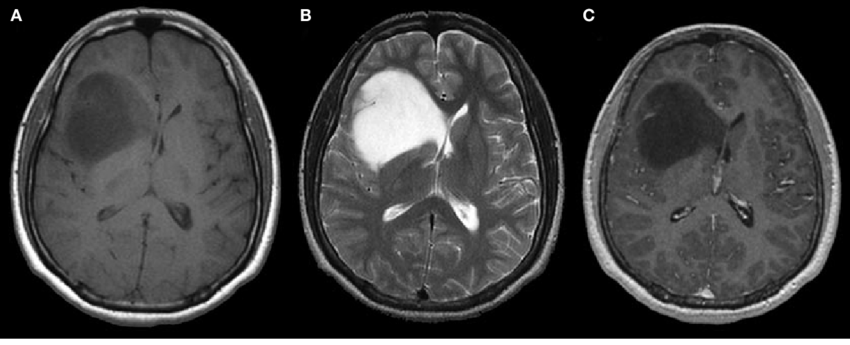
Glioma

Glioma is a type of tumor that occurs in the brain and spinal cord. Gliomas begin in the gluey supportive cells (glial cells) that surround nerve cells and help them function. Three types of glial cells can produce tumors. Gliomas are classified according to the type of glial cell involved in the tumor.
Types of glioma include:
• Astrocytomas, including astrocytoma, anaplastic astrocytoma and glioblastoma
• Ependymomas, including anaplastic ependymoma, myxopapillary ependymoma and subependymoma
• Oligodendrogliomas, including oligodendroglioma, anaplastic oligodendroglioma and anaplastic oligoastrocytoma
Gliomas can affect your brain function and be life-threatening depending on their location and rate of growth.
Gliomas are one of the most common types of primary brain tumors.
The type of glioma you have helps determine your treatment and your prognosis. In general, glioma treatment options include surgery, radiation therapy, chemotherapy, targeted therapy and experimental clinical trials.
Types
• Astrocytoma
• Glioblastoma
• Oligodendroglioma

Symptoms
The symptoms of glioma vary by tumor type as well as the tumor’s size, location and rate of growth.
Common signs and symptoms of gliomas include:
• Headache
• Nausea or vomiting
• Confusion or a decline in brain function
• Memory loss
• Personality changes or irritability
• Difficulty with balance
• Urinary incontinence
• Vision problems, such as blurred vision, double vision or loss of peripheral vision
• Speech difficulties
• Seizures, especially in someone without a history of seizures
Causes
Like most primary brain tumors, the exact cause of gliomas is not known. But there are some factors that may increase your risk of a brain tumor.
Risk factors
Risk factors include:
• Your age. Your risk of a brain tumor increases as you age. Gliomas are most common in adults between 60 and 80 years old. However, a brain tumor can occur at any age. Certain types of gliomas, such as ependymomas and pilocytic astrocytomas, are more common in children and young adults.
• Exposure to radiation. People who have been exposed to a type of radiation called ionizing radiation have an increased risk of brain tumor. Examples of ionizing radiation include radiation therapy used to treat cancer and radiation exposure caused by atomic bombs.
More-common forms of radiation, such as electromagnetic fields from power lines and radiofrequency radiation from cellphones and microwave ovens, have not been shown to increase the risk of glioma.
• Family history of glioma. It’s rare for glioma to run in families. But having a family history of glioma can double the risk of developing it. Some genes have been weakly associated with glioma, but more study is needed to confirm the link between these genetic variations and brain tumors.
